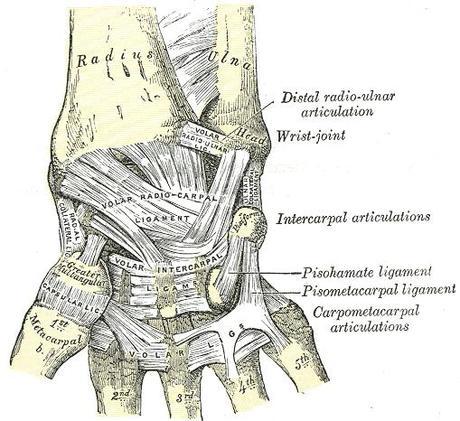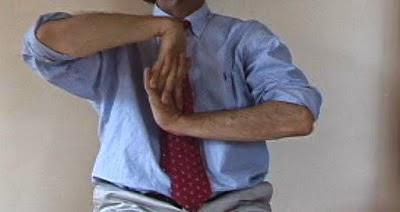 Q: I teach a chair yoga class. Last week I led my students in the "wrist flossing" exercise described on this web site (see Featured Sequence: Wrist Flossing for Wrist Care) and also in Timothy McCall’s "Yoga As Medicine."
Q: I teach a chair yoga class. Last week I led my students in the "wrist flossing" exercise described on this web site (see Featured Sequence: Wrist Flossing for Wrist Care) and also in Timothy McCall’s "Yoga As Medicine."A new student came up after that class to challenge me in using this sequence. She had had carpal tunnel surgery 6 months ago. She said that her surgeon said that people should never, never, never, put pressure on their hands while bending the wrists back, and that the wrist flossing we did was very dangerous. Her surgeon apparently says that bending the wrists back on their own is OK, but applying any pressure is very wrong. My student claims that poses like down dog, plank, even being on hands and knees, would make her surgeon shriek in horror.
If someone has no wrist problems, is there any danger in such positions?
I told my student that she is free to avoid doing such movements but that I will continue to have the class do the wrist flossing exercise occasionally. But I wonder...when should this NOT be done?
A: These are great questions! I want start by saying that for students with healthy wrists, wrist flossing, done appropriately and not excessively, poses no danger to the wrist joint, nor for that matter should positions such as Downward-Facing Dog pose, Plank pose, Cat/Cow pose or other positions when the wrist is in the position known as "extension." Having said that, keep in mind that too much of any position could be a problem if someone has sensitive wrists that are prone to episodes of soreness or pain.

Wrist Flossing
Secondly, I would point out that the yoga teacher who developed wrist flossing is also a chiropractor who sees many, many patients who present with wrist pain and overuse issues related to the wrists from computer work and other repetitive activities. You can read more about Tom Alden in Timothy’s book, but he claims to have good results in improving function and decreasing pain teaching this technique. I have had a few students with wrist pain from excessive keyboarding or activities like rock climbing, which is intense for the hands and wrists, and have taught them wrist flossing without problems, and with improvement in their symptoms.I cannot comment directly on what your student’s surgeon said or implied (since I was not there!), although it sounds like the student felt the warnings were quite serious. I will comment on the wrist movements she referred to: “bending the wrists back on their own is OK, but applying any pressure is very wrong.” Bending the wrists back on their own into “extension” in situations when your wrists are not bearing weight, for example, with your right hand when you arm is in the air, and you do this with the muscles in right arm and hand area alone, is called “active range of motion.” If you then, at that point in your wrist’s range of movement, bring your left hand over and bend your wrist more deeply into extension by applying pressure with your hand onto your right hand, the wrist will likely go a bit further. This additional movement is called “passive range of motion,” and it could allow you to stretch your forearm muscles a bit more deeply, which could have a nice benefit. However, if I were significantly injured or just out of surgery for carpel tunnel syndrome, I’d want to be very cautious of this, as it could aggravate things. Even with the wrist flossing instructions that I learned, the emphasis is on using the passive range of motion on the wrist that is bending into flexion, not the one going into extension.
I hope this additional information will allow you all to feel more comfortable teaching and/or doing wrist flossing.
Finally, yoga teachers should always encourage students to let them know about injuries, surgeries and health issues at the start of every class. And yoga students should please let your teachers know ahead of time what is going on with you! It sounds like the student that the teacher wrote about didn't let her teacher know about her wrist problems until after class. This happens to me all the time and is a bit frustrating—so hard for me to offer modifications after the fact!
—Baxter

